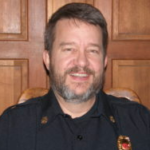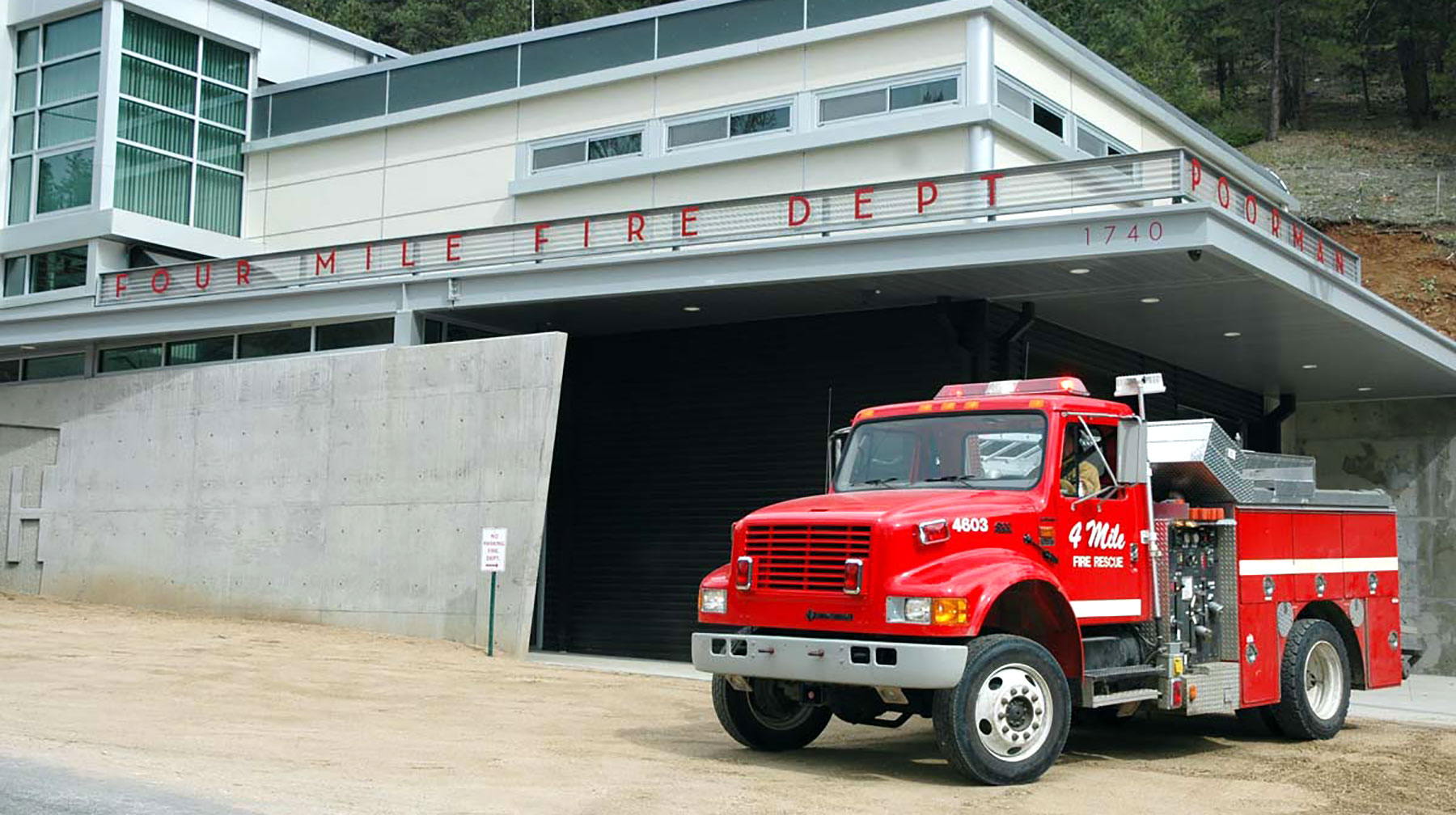At Poorman Station, the fire station just west of downtown Boulder, a shiny red brush truck, typically used to fight wildland fires gleams in a garage.
Circling the glorified pick-up a boy jumps and smiles. The boy, Blaze, wants to fight fires when he’s old enough. With the new vehicle, the Four Mile Fire Protection District, in which Poorman lies, has eight engines, with one currently out of service.
I meet Four Mile Fire Chief Bret Gibson at Poorman Station, one of Four Mile’s four locations in their district, dispersed so there’s always fire capability within five road miles of any house.

Four Mile serves, with surrounding fire departments, as the anchor of defense against wildfires. It’s one of 29 fire districts in Boulder County, one of 11 within Boulder’s Front Range foothill penumbra, along with Lefthand, Sunshine, Gold Hill, Sugarloaf, Indian Peaks and Nederland’s fire districts.
The Four Mile district and its compatriot rural fire districts have a big job, one that has received more attention in recent years as wildfires pose significant risk to Boulder County in its hot, dry summers.
Starting in Jamestown last October, the Calwood fire burned a little more than 10,000 acres and destroyed 26 homes. Though not close to being one of Colorado’s largest or most destructive wildfires, the Calwood fire raged just a few miles north of Boulder with flames visible from the north part of the city.

This puts fire districts like Four Mile in sharp focus.
According to the latest data from Boulder forestry service, and a growing awareness of the worsening challenges of wildfire season, Boulder and its larger foothills community lay in the eye of a seemingly approaching storm. We profile one of the entities on the front lines.
Fighting flames in the mountains
Because Boulder’s foothills lack fire hydrants, rural fire trucks carry around 1,000 gallons of water everywhere they go. In comparison, the city of Boulder’s trucks carry 200 to 400 gallons for alleyway or highway automotive fires, and can hook up to a million-gallon hydrants when they’re near.
“We have to haul every drop of water that we spray,” says Bret. “Any fire that we have up here, unless it’s in the dead of winter with a lot of snow on the ground, has a strong chance of going wild-land.” But an ablaze home in Boulder proper is likely to stay a single-structure fire.
On September 6, 2010, Boulder County’s Fourmile Canyon Fire set a record for the most expensive and house-destructive in Colorado, amassing $217 million in insurance claims and engulfing 169 homes.
Every Boulder fire department is responsible for a geographical district, determined by road access and accessibility during emergency response, and each has at least one fire station or barn.
Fire barns or garages may have a bathroom or meeting room, but are mostly made up of bays where firefighters park vehicles when they’re not in use. Fire stations, on the other hand, have the capacity to flush a toilet and sleep staffed firefighters.

The Four Mile Fire Protection District encompasses 15 square miles, shaped like a shoestring following Fourmile Creek. The three paid firefighters and 30 volunteer firefighters work with the unit on wildfire mitigation, putting out structure and wildland fires, medical calls and other accidents or rescues.
The Four Mile Fire Protection District encompasses 15 square miles, shaped like a shoestring following Fourmile Creek. The three paid firefighters and 30 volunteer firefighters work with the unit on wildfire mitigation, putting out structure and wildland fires, medical calls and other accidents or rescues.
In Four Mile, Bret and his district protect 325 homes with an overall property value of $15 million. In comparison, Boulder Mountain protects 600 homes over a smaller area, and each home is worth around $3.5 million.
Indian Peaks, the largest district area in Boulder County, has the fewest homes to protect. Their district recently bought a fifth truck, their only vehicle to have been bought brand new, bringing their trucks’ average age to around 30 years.
In addition to carrying more water than city trucks, rural stations also experience longer response time, especially if it’s a combination district of volunteer and paid firefighters, like Four Mile is.
Though Four Mile has 30 volunteers and three full-time firefighters, some stations only use volunteer firefighters. Because volunteer firefighters are on call 24/7 and not always at the station, response time can take even longer for rural fires.
“I’m in town at McGuckins, the grocery store or my day job,” says Bret, who works as Boulder’s interim HOP bus supervisor at Via when he’s not at the station. After he gets a call, it can take Bret 15 minutes to get into the district. After arriving at the station, Bret dresses in his bunker gear and drives to the fire.
The average national response time is 7 minutes, from the moment someone calls 911 until firefighters arrive on the scene.
But by the time a rural, volunteer firefighter arrives at the fire, it’s been 35 or 40 minutes since they’ve gotten the call. “We fight a totally different war,” Bret says.
But Four Mile doesn’t always have to fight their fires alone. In addition to training and sharing command structure with Gold Hill and Sunshine fire protection districts, Four Mile and Sunshine have agreed to go to each other’s fire and medical calls as needed.
It’s always fire season
Three years ago, Chief Bret guesses Four Mile dispatched only six firefighter or engine dispatches outside Boulder County annually. Last year, Four Mile dispatched 53 times, half of which were in Colorado.

So far this year, Four Mile has been on five dispatches. “Last year, we weren’t out yet,” Bret says. “I’ve been in this world for 33 years. We used to have seasons.”
The nonfire season is typically November to March, followed by training season from April to June. July and August makeup wildfire season, which can stretch into September.
“Starting in about 2000, the wildfire season was 8 months a year, pretty predictably,” Bret says. “Now wildfires are 12 months out of the year.” Four Mile used to drain their brush trucks of water, but now they remain full yearround.
Indian Peaks’ fire district, which runs a lot of rescue calls in their open space and nations forest, never had many wildland fires because not much burns at that altitude. Bret says, “That’s no longer true. They’ve got lots of little fires now.”
Though Bret says he’s a pessimist by nature, he believes the solution to worsening fire seasons is more forest management and health on a landscape scale.
“Also, stop treating fires like a war. It is a natural event, whether man-caused or nature-caused,” Bret says. “You don’t fight a hurricane, you don’t fight a flood, why are we fighting a fire?”

